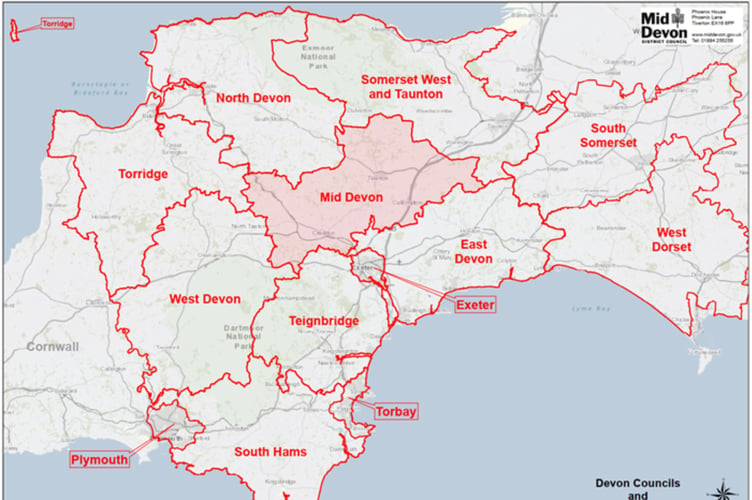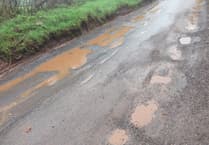DEVON’S political map is set be redrawn as part of the most dramatic shake-up of local government in decades, but it isn’t yet certain how the county’s administrative boundaries will end up.
The wide-ranging proposals seek to abolish district and borough councils to create larger authorities, with mayors overseeing one or more of those new entities.
Devon County Council and Torbay Council had their bid to become a combined county authority (CCA) approved by the last Conservative government at the beginning of the year. However, the two authorities purposely pursued a non-mayoral set-up.
Torbay had an elected mayor between 2005 and 2019, when the role was abolished.
Deputy Prime Minister Angela Rayner, who is also the secretary of state responsible for local government, referred to the CCA in a devolution white paper that sets out the government’s vision for the reorganisation.
The government said the Devon and Torbay CCA would continue to receive powers to “to improve the integration of local transport and control of local transport functions” and also be given the “ability to exercise compulsory purchase powers to help drive regeneration”.
They will also receive devolved adult skills funding from academic year 2026/2027.
But it is unclear what will happen to the CCA after that, especially as that body was not intended to lead to the abolition of any local councils.
The picture now
Currently, Devon has eight district or borough councils, a county council and two unitary authorities.

Districts and boroughs oversee services such as planning and waste collection, while county councils are responsible for the likes of education and the highways network.
Unitary authorities look after all services within their areas, and it is this format that the government is seeking to replicate across the country.
Under Ms Rayner’s proposals, though, while it is clear the government no longer sees districts as the future, it isn’t quite so obvious what exactly might happen to them in Devon.
They are being invited to propose how they might amalgamate with neighbouring authorities, and talks are under way now.
Another factor that is also unclear is what happens to Devon’s unitary authorities.
While they might meet the desired “unitary” format that the government seeks, neither of Devon’s unitary councils – Plymouth and Torbay – have 500,000 residents – a requirement outlined in the new local government reorganisation proposals.
Plymouth has a population of just over 264,000 based on 2021 census data, while Torbay sat at around 139,000.
The white paper states that unitary councils could be reorganised or merged into a new, larger authority, where there “is evidence of failure or where their size or boundaries may be hindering their ability to deliver sustainable and high-quality public services”.
What could happen next?
One senior Devon political source, who did not want to be named, suggested that four Devon district councils were looking to create a proposal to become one new enlarged authority.
There have also been claims that Devon County Council and Torbay might look to become one entity; even though they are both part of a CCA, they still retain their distinct identities outside of that body at present.
Others have said they wonder whether both Plymouth and Exeter – Labour-run councils – might try and go it alone even though they come nowhere close to the 500,000 population minimum level being required by Ms Rayner. Essentially that means no change for Plymouth, but Exeter taking on the responsibilities of a unitary authority. It planned for that in the late 2000s, before aborting the idea in 2010.
More realistically, both cities could absorb neighbouring districts, with the exact make-up and boundaries up for debate.
Some people on social media platform X have attempted to draw a notional new political map of Devon. The ‘Exeter Urbanist,’ for example, seemingly splits the county into five areas, including a Plymouth authority that subsumes parts of West Devon and half the South Hams, with the other half of that latter council roughly merging with Torbay and Teignbridge.
Given South Hams District Council already collaborates with Plymouth on the county’s freeport, there could be logic to the councils becoming one authority, and possibly with others too.
A busy start to 2025
What is clear is that with councils only having until Friday, January 10 to put forward proposals for who they want to merge with, the political calendar for the first month of 2025 is going to be stuffed full.
Devon County Council has announced a special meeting the day before to discuss its options, and others will no doubt be following suit.
Besides boundaries, politics will also be at play. The county council is Conservative-controlled, but is surrounded by Liberal Democrat-run councils including Teignbridge, the South Hams, East Devon and Mid Devon.
And somewhat ironically, the county council’s headquarters is in Labour-controlled Exeter.
Who wants to collaborate with whom, therefore, could be important, and one key issue to watch will be whether the county council elections go ahead in May, or whether they are deferred – something potentially allowable for councils who put forward merger proposals.
Bradley Gerrard




